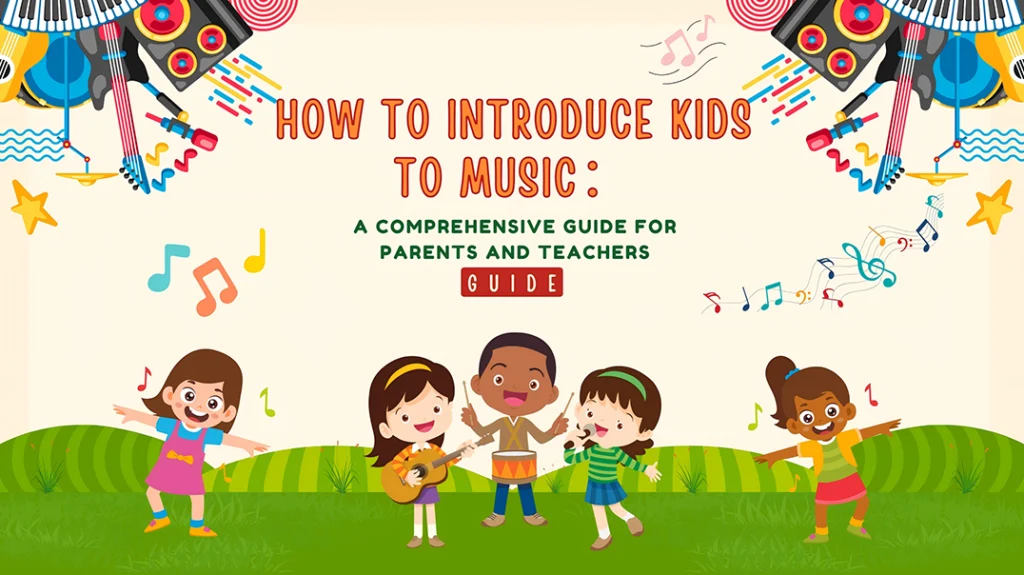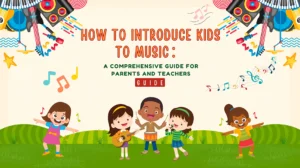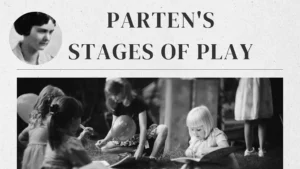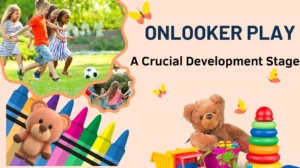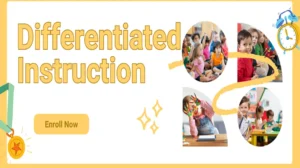Introducing kids to music start with simple songs, clapping rhythms, and dancing to build interest. Let children explore instruments like tambourines, drums, or xylophones to experience sound and movement. Encourage singing and musical games to make learning fun and interactive. A music-rich environment helps develop confidence and coordination.
When children are introduced to music through thoughtful, playful, and age-appropriate methods, they not only enjoy it, they thrived. With the right support, music becomes a gateway to creativity, emotional expression, and even better cognitive and social development. From tapping to rhythms to singing their own songs, kids gain confidence, coordination, and communication skills.
This article is your bridge to that transformation. If you’ve been wondering how to introduce kids to music in a way that’s fun, effective, and rooted in both play and purpose, you’ll find practical strategies, activity ideas, and insights for both home and classroom settings, all in one simple guide.
Why Music Matters in Early Childhood Development
When we consider how to Introduce kids to Music, it’s crucial to appreciate that music isn’t just entertainment, it’s a developmental powerhouse. Research shows that early engagement in musical experiences enhances cognitive abilities, builds emotional resilience, and supports motor and language development. For instance, exposing children to music helps them pick up the sounds and meanings of words, strengthens their capacity to focus and remember, and encourages coordination of movement.
Engaging children in songs, rhythms, and simple instruments fosters their fine and gross motor skills. For example, when a toddler strikes a drum or shakes a rattle, they’re practicing hand‑eye coordination, timing, and spatial awareness. HeadStart.gov Moreover, groups or pair activities that involve music support social skills, sharing, taking turns, listening, and leading. By thinking about how to Introduce Kids to Music as more than just “learning songs,” we see it as nurturing whole‑child growth: emotional, social, physical, and cognitive.
Furthermore, children who engage in musical training have shown advantages in verbal memory, reading ability, and executive function later on so for parents and teachers alike, the takeaway is that establishing a musical habit early is not a luxury, it’s a meaningful investment in a child’s holistic development.

Fun and Easy Ways to Introduce Music at Home
Bringing music into the home environment is one of the simplest and most effective ways to introduce kids to music. Here are some straightforward strategies:
- Sing together in daily routines. Whether during bath time, dressing, or snack time, you can add a short song or rhythm. This helps children associate music with everyday life and builds comfort with sound and voice.
- Use movement and rhythm. Encourage children to clap, stomp, sway or bounce along with songs. This supports coordination, gross and fine motor skills, and makes music physically engaging. Research notes that movement paired with music helps spatial awareness and body coordination.
- Play and experiment with sound. Let children explore by creating simple shakers, tapping a pot, or improvising rhythm patterns. This exploratory play gives them ownership and curiosity rather than passive listening. It’s a natural way to show them how to introduce kids to music organically.
Remember: the goal is not perfect performance but joyful exploration. When children feel safe to experiment and make noise, you build their confidence and curiosity.
Creative Classroom Activities to Teach Music
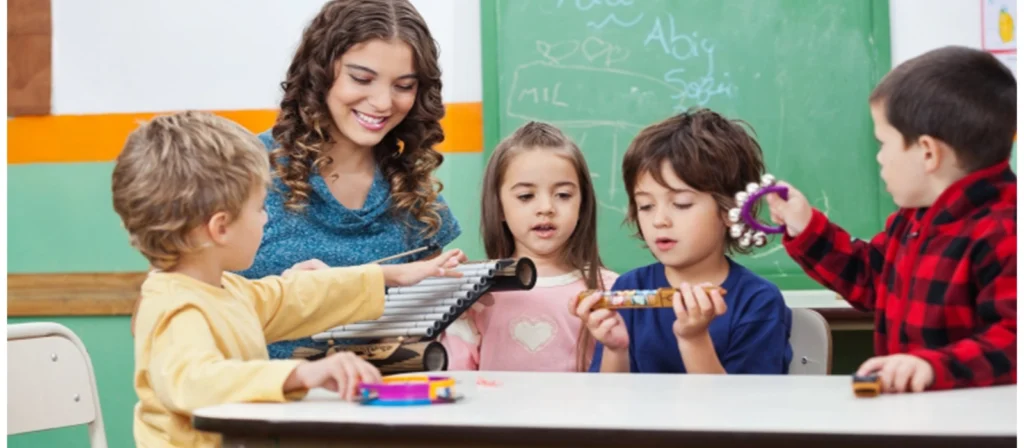
For teachers or educators working with groups, incorporating music into the classroom can transform a lesson into a dynamic experience. When designing activities for students, think about how to introduce kids to music in ways that feel inclusive and playful. Here are some ideas:
- Call-and‑response songs. This activity helps children listen, respond, take turns, and engage in musical conversation. It fosters language development, social skills, and attention.
- Movement‑based music breaks. Integrate short segments where children move to music: march to the beat, freeze when the music stops, follow rhythm patterns. Such activities enhance motor skills and help transitions between tasks.
- Instrument discovery stations. Set up a variety of simple children’s musical instruments and allow children to explore them freely: shaking, tapping, listening to differences. Then guide them to talk about what they hear, how the sound changes, and what they enjoyed. This engages sensory, auditory, and language development simultaneously.
By using these techniques, you create a classroom culture where music is accessible, fun, and embedded into learning, not just as an extra. This approach supports the broader aim of how to introduce kids to music meaningfully
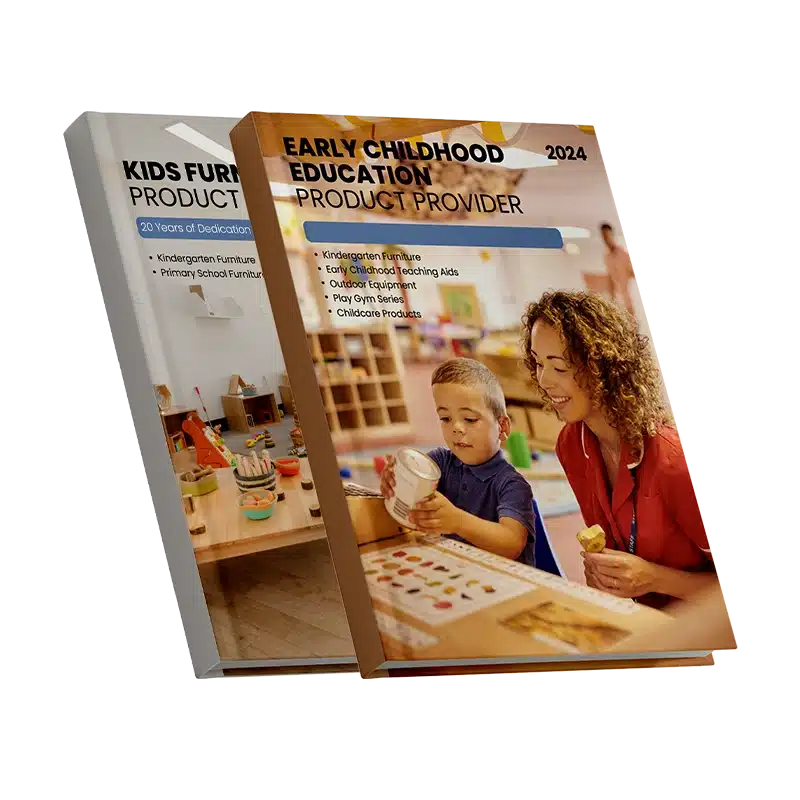
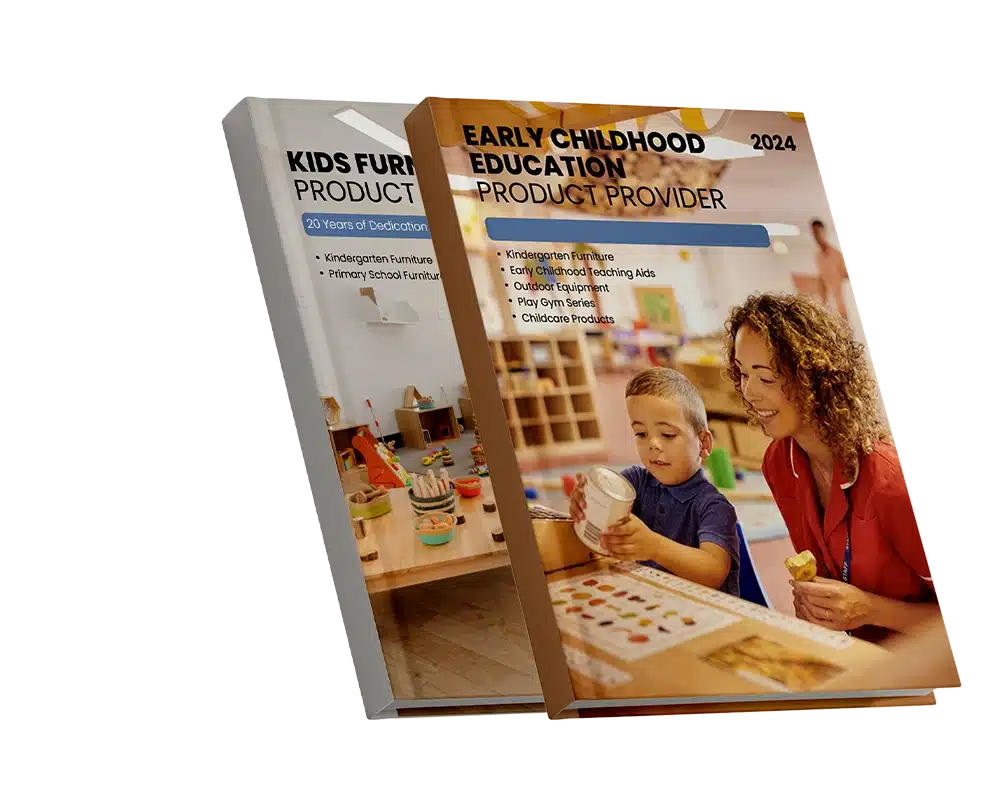
15 Recommended Songs for Introducing Kids to Music

1. “Twinkle, Twinkle, Little Star”
This timeless lullaby introduces children to pitch, melody, and rhyme in an incredibly soothing and familiar format. Its simple structure makes it ideal for teaching note repetition and scale intervals. The melody also shares a tune with the alphabet song and “Baa Baa Black Sheep,” reinforcing memory through repetition.
2. “Old MacDonald Had a Farm”
A classic for engaging children through animal sounds, rhythm, and sequencing. Each verse adds a new animal and sound, making it interactive and encouraging vocal participation. It supports pattern recognition, which is key to both music and early literacy development.
3. “If You’re Happy and You Know It”
This action song combines movement and music, helping kids link physical actions with rhythmic cues. It introduces basic musical concepts like tempo and dynamics, while reinforcing emotional literacy by naming and acting out feelings.
4. “The Wheels on the Bus”
With repetitive verses and a narrative structure, this song builds memory, sequencing, and participation. It offers natural opportunities for gesture-based learning, encouraging kids to move in rhythm. It also introduces vocabulary related to transportation and community life.
5. “Head, Shoulders, Knees, and Toes”
This is a superb introduction to tempo changes and physical coordination. The song gradually increases in speed, challenging kids to keep up, building motor skills and listening attention. It also strengthens body awareness and vocabulary.
6. “Row, Row, Row Your Boat”
This calm, flowing melody introduces triplet rhythm patterns and lyrical phrasing. It’s often used for canon singing, allowing children to experiment with harmony and round singing, perfect for group activities in both homes and classrooms.
7. “The Alphabet Song (A-B-C Song)”
Set to the familiar melody of “Twinkle, Twinkle,” this song is a foundational tool for early literacy. The musical phrasing aids in letter recognition, memorization, and language rhythm awareness. It’s also easily adapted for different pacing depending on age.
8. “Bingo”
This song teaches spelling, rhythm, and memor through a fun, repetitive pattern. The gradual removal of letters and replacement with claps introduces kids to substitution in rhythm and engages their attention and memory recall.
9. “This Little Light of Mine”
Beyond its musical value, this gospel-inspired tune promotes self-expression and confidence. With simple chords and a powerful message, it encourages singing with emotion and group harmonizing. Ideal for older preschoolers and early elementary students.
10. “Five Little Ducks”
Combining counting, storytelling, and emotional narrative, this song is perfect for introducing musical storytelling and math concepts. The emotional arc of the mother duck adds depth and empathy to the experience.
11. “Hokey Pokey”
This high-energy, movement-based song is ideal for introducing directional language, body awareness, and sequencing. Kids love acting out the lyrics, which strengthens their coordination and understanding of spatial concepts. It also teaches musical form through repeated refrains and physical engagement.
12. “Do-Re-Mi”
This classic show tune is one of the most enjoyable ways to teach solfège (Do, Re, Mi) and scale structure. The song provides clear associations for each note, helping children understand pitch relationships and music theory basics in a playful and memorable way.
13. “London Bridge is Falling Down”
A simple melody with an easy-to-learn structure, this nursery rhyme helps children with timing, pitch, and call-and-respons skills. When sung with a partner game, it introduces rhythmic movement and collaborative play, reinforcing music’s social dimension.
14. “Itsy Bitsy Spider”
This gentle rhyme is excellent for fine motor skills through accompanying hand gestures. It introduces melodic direction, narrative flow, and quiet dynamics. It’s also great for toddlers and preschoolers as a calming, story-based music activity.
15. “Shake My Sillies Out”
Written by a beloved children’s music artist, this song encourages children to move their bodies, burn energy, and get into rhythm. It’s particularly useful for transitions between quiet and active times, as it blends tempo changes, action-based learning, and emotional self-regulation through physical expression.
The Role of Music Toys in Learning Through Play
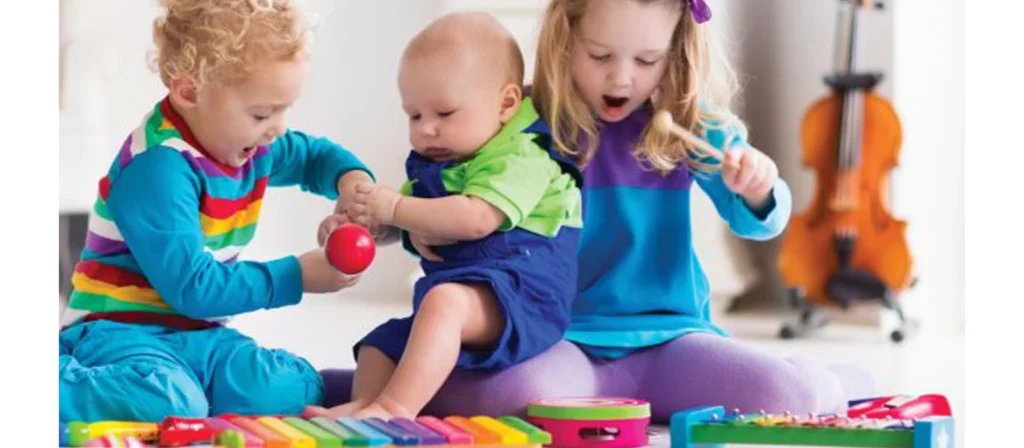
When discussing how to Introduce Kids to Music, it’s essential to highlight the impact of music toys. Play is the natural medium through which children learn, and music toys become powerful tools for exploration, discovery and expression. Music toys offer interactive, tangible experiences. A child might press a key and hear a tone, shake a rattle and feel their action create sound, or strum a mini‑guitar and sense rhythm. This direct cause‑and‑effect learning supports curiosity and builds foundational understanding of sound. Play with music toys encourages experimentation, repetition and creativity, all key to long‑term engagement.
Selecting good music toys means choosing items that are appropriate for the child’s age, safe, and provide a range of sounds and possibilities. Encourage children to pick the toy, make their own noise, explore, and ask questions: “What happens if you tap gently vs hard?” This playful investigation is central to how to introduce kids to music without pressure.
Ultimately, music toys serve as the bridge between passive listening and active making. They support early experiences with rhythm, melody and instrument‑like behaviours. For both parents and teachers, embracing music toys creates an environment where children can learn, create, and delight in sound.
Choosing the Right Children’s Music Toys for Kids
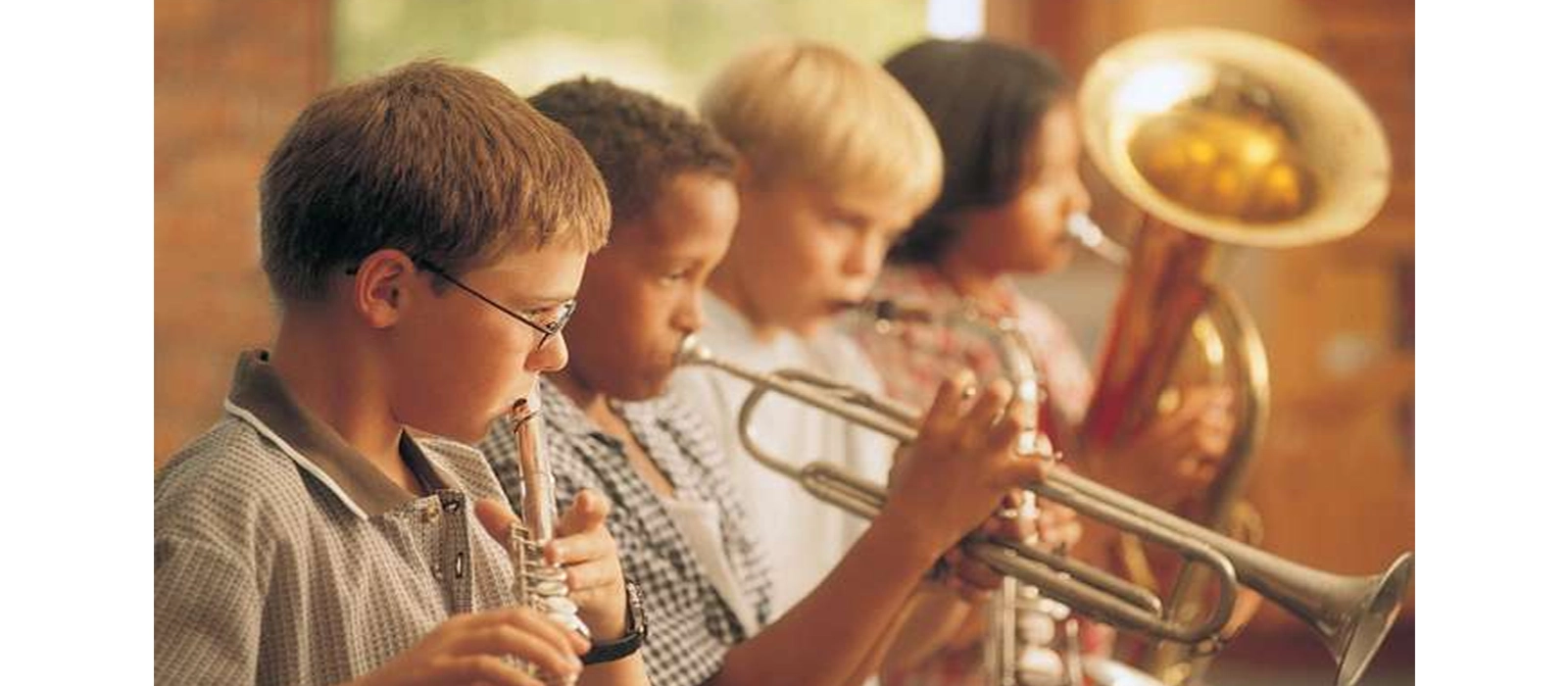
Once children show interest and readiness, moving toward actual children’s musical instruments is a natural next step in the journey of how to introduce kids to music. But how do you choose wisely? Here are key considerations and recommended musical instruments toys for children:
- Age‑appropriate size and ergonomics. Small guitars, xylophones, drums or keyboards designed for children allow them to handle the music toys comfortably and feel success rather than frustration.
- Variety and accessibility. Offer options, stringed, percussion, wind or keyboard toys, so children can explore what appeals to them. This openness supports motivation and engagement.
- Quality over perfection. The goal isn’t to buy a professional instrument immediately; rather to choose a durable, correctly tuned beginner music toys that encourages play. The music toys is a vehicle for the child to interact with sound, rhythm and musical ideas.
- Align with interest and support. If the child loves drums, offer a small drum or pad; if they lean toward melody and singing, a keyboard or ukulele may suit. Offer regular, brief sessions rather than forcing long practice times. This aligns with best practices for introducing kids to music: keeping it fun, exploratory and responsive to the child’s pace.
- ease or difficulty of learning a musical instrument. Before choosing an music toys, we must understand whether the practice of these instruments is too difficult or too easy for children of this age. If it is too difficult, it may cause children to lose confidence in music; if it is too easy, it may not be able to attract children’s interest. Therefore, it is necessary to choose music toys with a difficulty level more suitable for children.
| Music Toy | Key Benefits | Difficulty Level |
|---|---|---|
| Egg Shakers | Improves rhythm, easy to hold, safe for toddlers | Very Easy |
| Tambourine | Enhances coordination, introduces beat and timing | Easy |
| Xylophone | Teaches pitch and melody, colorful and engaging | Easy to Moderate |
| Toy Piano or Keyboard | Develops fine motor skills, introduces notes and scales | Moderate |
| Hand Drum | Encourages self-expression, rhythmic awareness | Easy |
| Kazoo | Explores breath control, introduces wind instruments | Easy |
| Mini Guitar or Ukulele | Builds hand coordination, early chord awareness, good for melody learning | Moderate to Hard |
| Musical Activity Table | Multi-sensory, combines sound, lights and movement to keep toddlers engaged | Very Easy |
By thoughtfully choosing children’s musical instruments toys, parents and teachers set the stage for a pathway of musical exploration, from toy to instrument, from play to creation. With the right support, children can grow their interest into skill, confidence and perhaps lifelong musical engagement.


How to Encourage Musical Exploration Without Pressure
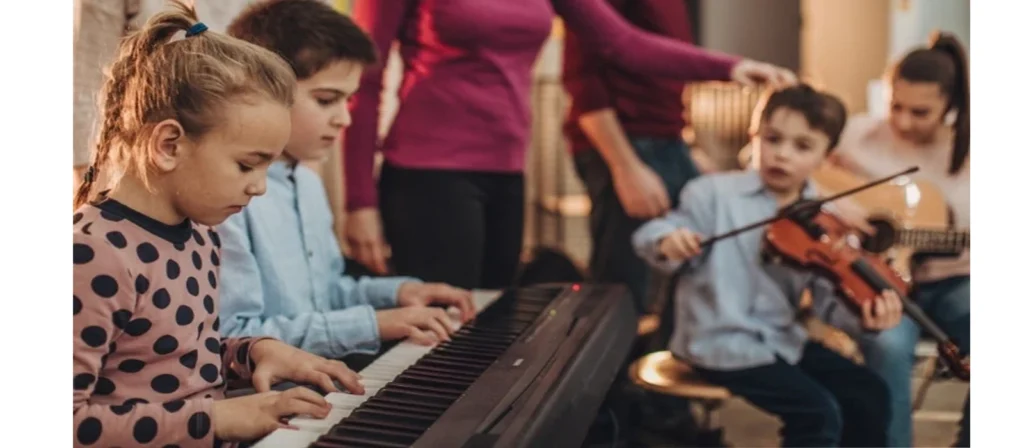
A key piece of learning how to introduce kids to music is striking the balance between offering opportunities and avoiding pressure. Music should feel like freedom, not a chore. Here are strategies to encourage musical exploration in a gentle, positive way :
- Focus on fun, not perfection. At early ages, results don’t matter. The joy in making sound, discovering rhythm, singing out loud is what counts. This builds intrinsic motivation rather than fixating on skill.
- Celebrate small steps and curiosity. When a child picks up a tambourine, shakes a shaker, or sings a new phrase, acknowledge their participation: “Great sound! What do you want to try next?” This fosters confidence and keeps them engaged.
- Embed music in routines rather than isolate it. Make musical moments part of daily life,transitions , clean‑up songs, dance breaks ,so that exploring sound becomes natural and expected rather than an extra burden.
- Let children guide their interest . If a child is drawn to rhythm, provide percussion; if another leans toward melody or singing, offer a keyboard or voice exploration. Adapting to their preference helps because the child feels ownership.
- Allow playful experimentation and mistakes. Part of musical learning is exploring, making “wrong” sounds, and discovering new ones. Encourage messing around, trying loud vs soft, fast vs slow. Mistakes are simply part of the process.
By creating an environment where exploration is encouraged, mistakes are okay, and music is enjoyable, you fulfill the core of how to introduce kids to music: building curiosity, confidence and a sense of belonging in the musical world.
Building a Musical Routine That Kids Will Love
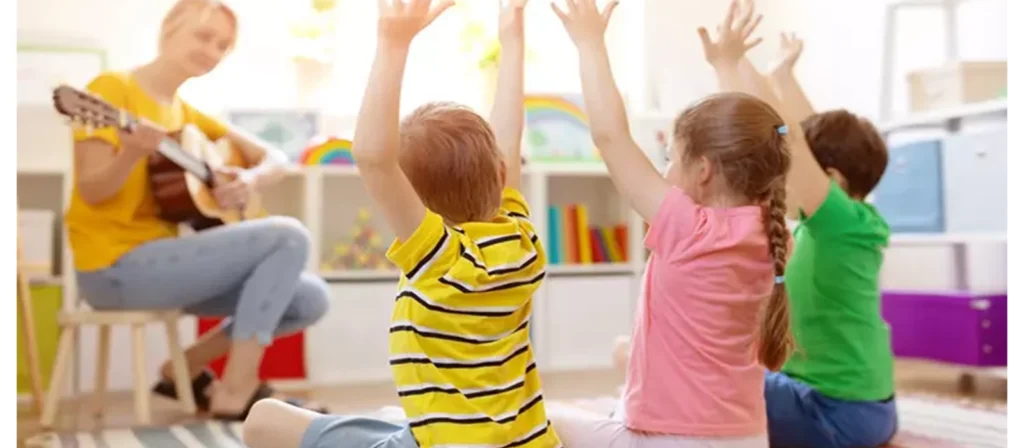
Finally, establishing a sustainable musical routine helps integrate music into the child’s life in a way that lasts. Here are components for building such a routine:
- Short, consistent sessions. Regular periods of musical activity, five to ten minutes each day, work better than long, infrequent sessions. Consistency helps children develop familiarity and comfort.
- Mix structured and free‑play time. For example: 3 minutes of guided rhythm clapping, followed by 5 minutes of free exploration with a music toy or instrument. This blend keeps things balanced and engaging.
- Incorporate listening, singing, playing. Encourage children to listen to music, sing songs they enjoy, and play instruments or music toys. This variety supports different facets of musical engagement.
- Create a special music space or moment. Whether it’s a corner of the classroom or a moment after snack time at home, establish a predictable music time. Predictability helps children feel secure and look forward to it.
- Link music to other learning and daily life. Use songs for transitions, clean‑up, movement, emotions. Embed music into everyday routines so it becomes a natural part of the day, not a separate “lesson”.
When music practice is no longer a chore but a beloved habit, children are more likely to embrace it. This is the essence of guiding children to engage with music in a sustainable, fun, and meaningful way.
Conclusion
Introducing children to music is a rich journey that reaches far beyond notes and instruments. It is about nurturing development, connection, curiosity, creativity and joy. Whether you are a parent or a teacher, the strategies outlined above provide a roadmap for how to introduce kids to music in ways that feel natural, playful and effective. Begin with simple musical experiences at home or in the classroom, gradually introduce music toys and children’s musical instruments, and always keep the emphasis on fun, exploration and routine. By doing so, you open doors to lifelong benefits: enhanced cognitive skills, improved coordination, emotional expression and a deep love for sound and rhythm.
Remember: the aim is not to produce a concert performer overnight, but to invite children into the world of music, where they listen, move, create and belong. Through thoughtful introduction and guided freedom, you help children discover their own musical voice and give them a gift that lasts.
FAQs
1. What age is the best to start introducing kids to music?
There’s no perfect age, but introducing music early through singing, movement and sound sets a strong foundation. As children develop, you can introduce more structured exploration of children’s musical instruments.
2. How do I choose the right music toy for my child?
Look for toys that are age‑appropriate, safe, and encourage exploration (e.g., shakers, small keyboard, xylophone). A good toy helps children experiment with sound and rhythm without pressure.
3. Do children need formal lessons to benefit from music?
No. While formal lessons can be valuable later, the early aim in how to introduce kids to music is playful exploration. Short, fun sessions and open‑ended play are highly beneficial.
4. How much time should I spend on music each day?
Short, consistent time,5 to 10 minutes daily, is often more effective than rare long sessions. The goal is routine, familiarity and enjoyment.
5. What if my child isn’t interested in playing instruments?
That’s okay. Music involvement comes in many forms, listening, singing, movement, exploring music toys. Follow their interest, provide choices, and keep the tone light and fun.
6. Can music help with other aspects of learning?
Yes, research shows music supports language development, memory, coordination, social skills and emotional regulation.



